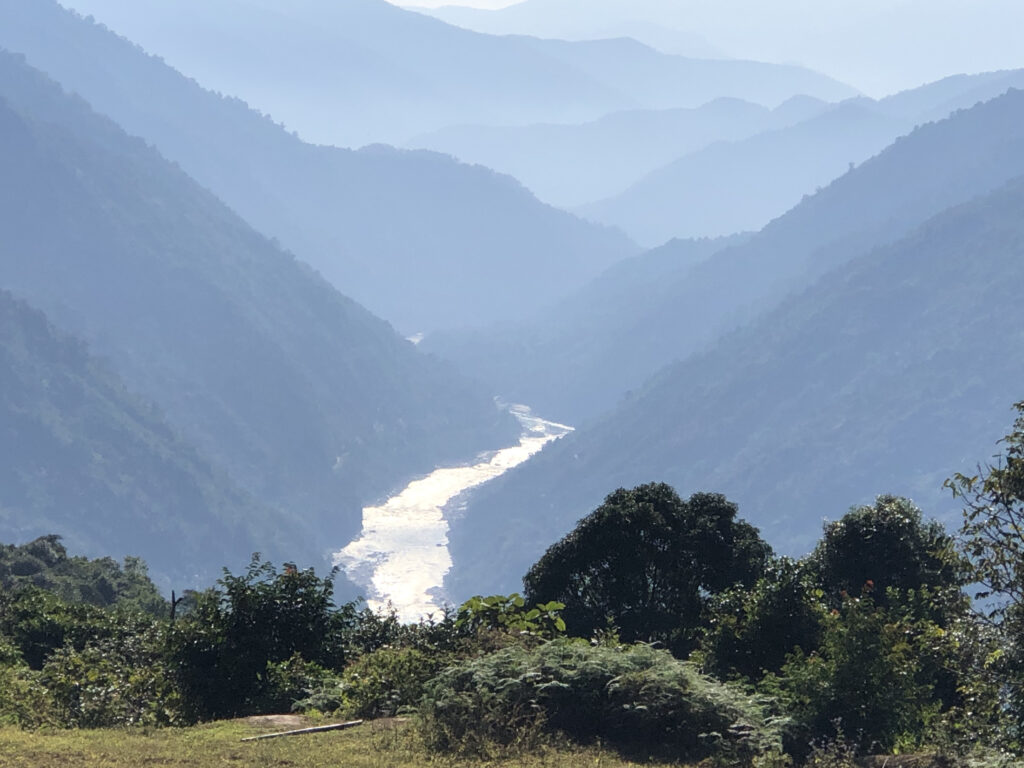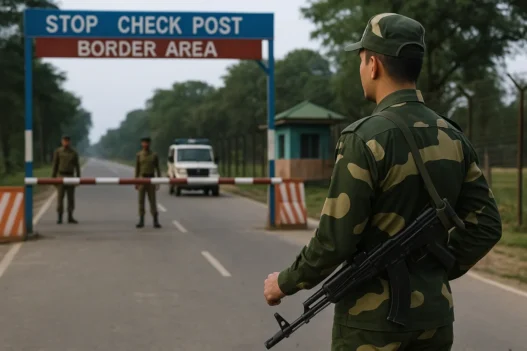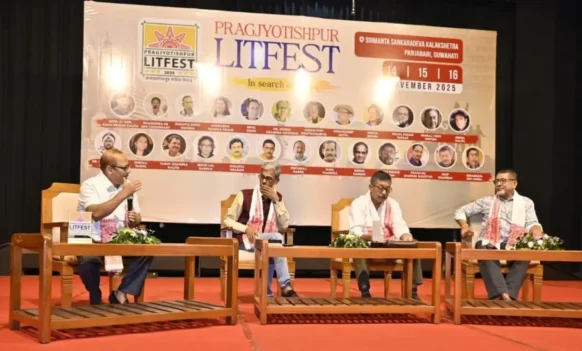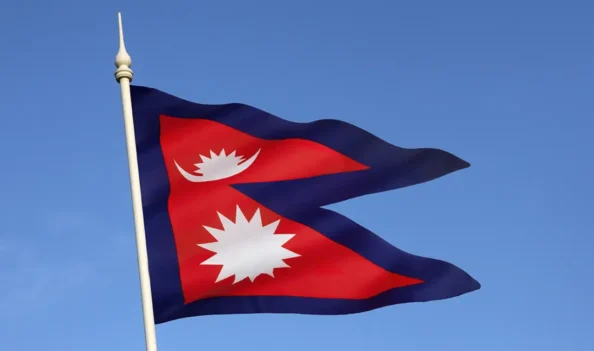With a prayer wheel in her hand, 70-year-old Dolma from Gelling stands as a quiet sentinel of the Siang River’s future. Her gaze, calm but firm, captures the confluence of anxieties faced by communities living on the edge of powerful decisions. Like residents of Beging village downstream, she too worries about the impacts of dams—both the proposed one on the Siang River in Arunachal Pradesh and the massive hydroelectric dam China is constructing upstream on the Yarlung Tsangpo. Yet Dolma’s confidence in the self-sufficiency of her region and the “insufficiency” of water resources on the Chinese side marks a poignant contrast. Her words echo a deeper local wisdom: “China can’t do much harm,” she had told us almost a year ago during a journey that took us all the way up to Tuting and Kepengla, tracing the river’s path from where the Yarlung Tsangpo enters India and becomes the Brahmaputra.
Dolma’s perspective now gains renewed relevance in light of the recent uproar over the proposed Siang Upper Multipurpose Project (SUMP), a massive 11,000–12,000 MW hydroelectric dam planned in Arunachal Pradesh. The protest on May 23 in Beging village—sparked by the deployment of Central Armed Police Forces (CAPF) to support survey work—marks the latest in a decades-long resistance movement by indigenous communities. But what complicates the debate is that the dam is not merely a power-generation project; it is being pitched as a strategic countermeasure to China’s upstream ambitions.
Chief Minister Pema Khandu reiterated the project’s strategic importance, citing potential risks posed by China’s dam on the Yarlung Tsangpo in Medog, Tibet, just 30 km from the Indian border. He warned that China’s unregulated release of water could lead to catastrophic floods in the Siang valley and Assam or, conversely, water withholding could cause rivers to dry up during winters.
The 60,000 MW Chinese dam—the largest hydroelectric project ever conceived—forms part of Beijing’s broader South-North Water Diversion strategy. The river, known in India as the Brahmaputra, originates in Tibet and flows over 2,000 kilometers before entering India. The proposed diversion threatens to drastically alter water availability in the middle and lower riparian regions, including northeastern India and Bangladesh.
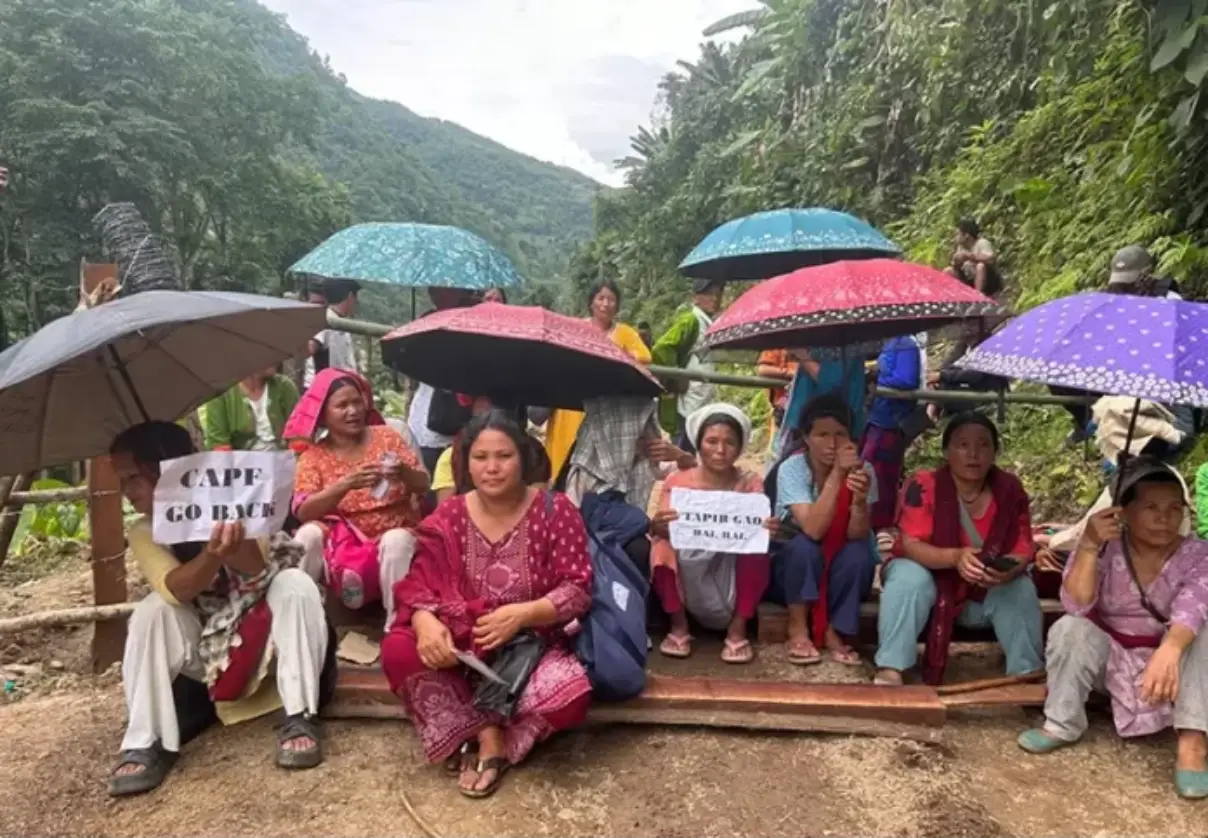
Yet Chinese Studies scholar Professor Srikanth Kondapalli of Jawaharlal Nehru University offer a counter-narrative. In a recent conversation with The Borderlens he asserted that fears may be overblown, noting that the Yarlung Tsangpo has a relatively small catchment area and receives only 100–350 mm of annual rainfall. “There is not much water there,” he explains, arguing that the true contributors to the Brahmaputra’s flow lie within Indian territory—namely the Dibang, Siang, Subansiri, and various other rivulets.
Notably, The JNU Chinese Studies Professor points to what former Prime Minister Manmohan Singh told Parliament in 2011: that while the Yarlung Zangpo at Namcha Barwa releases 62 billion cubic meters of water, the Brahmaputra’s volume swells to 220 billion cubic meters by the time it reaches Bangladesh. The implication: more than two-thirds of the river’s water comes from Indian territory between Namcha Barwa and Mizoram.
Despite this reassurance, environmentalists remain cautious. Past large-scale Indian dam projects such as the 3,000 MW Dibang Multipurpose Dam have faced opposition due to concerns over displacement and ecological damage. The forest advisory committee once rejected the Dibang project, citing plans to submerge over 5,000 hectares of dense forest. Yet the project eventually proceeded. Similar pushback continues around the SUMP, with civil society groups urging the government to explore “ecologically responsible alternatives,” such as distributed mini-hydel projects.
Meanwhile, global Tibetologists like Tashi Tsering have long warned that China’s dam-building is neither environmentally sound nor socially benign. He recalled the devastating 2000 flash floods in Arunachal Pradesh caused by the breach of a natural dam in Tibet—a stark reminder of the downstream risks.
Tsering has also highlighted Beijing’s plans to divert Tsangpo waters thousands of kilometers to China’s arid northwest provinces, potentially using “peaceful nuclear explosions” to blast tunnels through the Himalayas. This raises significant red flags not only for India’s water security but for the fragile Himalayan ecology.
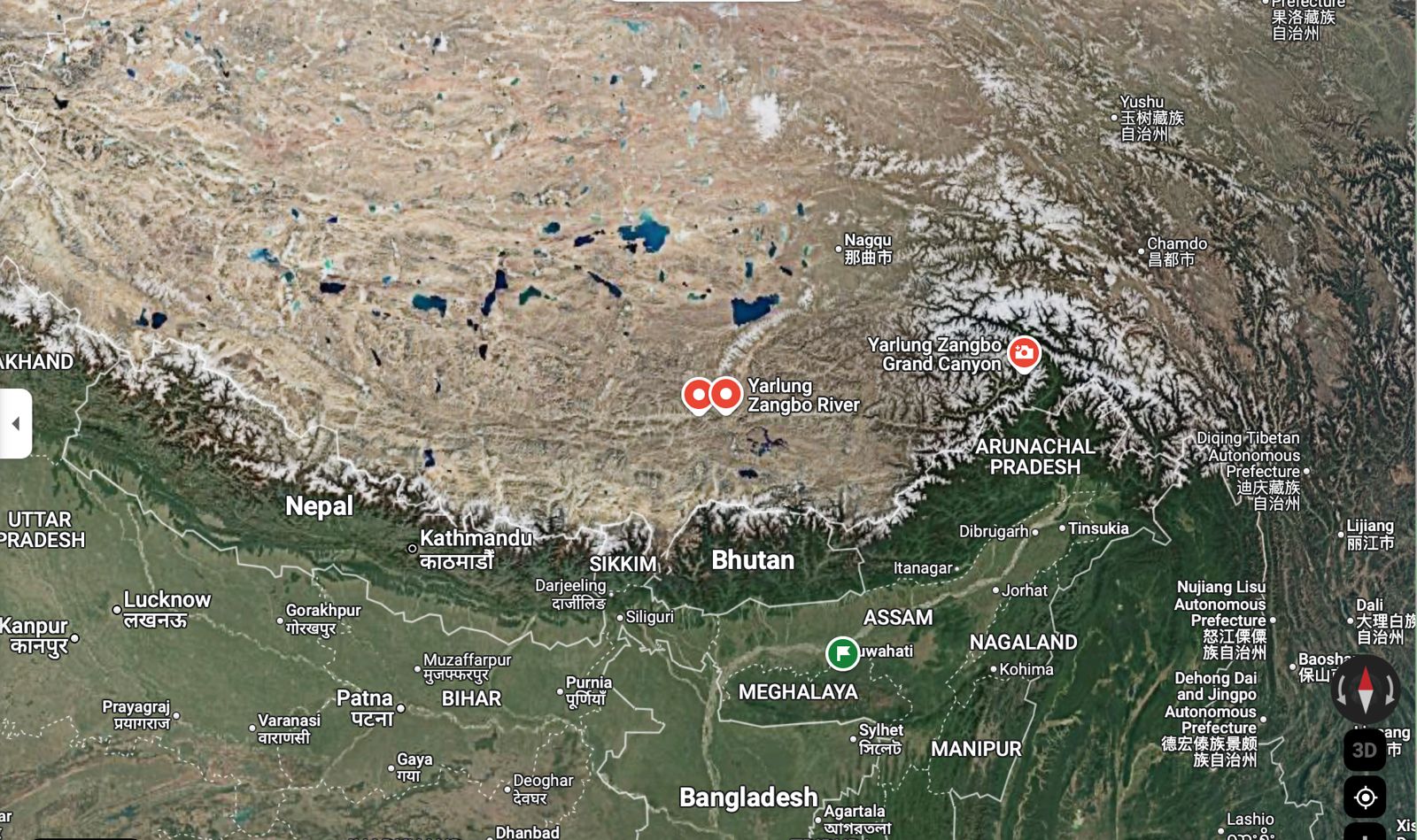
He had noted that 80% of the region’s precipitation occurs during just four monsoon months (June–September), with the remaining eight months contributing only 20%. This seasonal imbalance allows China to withhold water during dry spells for power generation and irrigation during the dry season, but would be compelled to release water during the flood season —creating unpredictable risks for those living downstream.
Local communities in Arunachal Pradesh have consistently demanded that such concerns be taken seriously. A media report quoting Oyar Gao, founder of the Siang Peoples’ Forum, underscores the long-standing resistance among local communities. “Our resistance began in the 1980s when the Brahmaputra Board first proposed a dam on the Siang,” he said. “Back then, dams were sold as a means to control floods downstream. Today, the narrative has shifted to concerns about China. But for us, it has always been about safeguarding our river and our land,” Gao continued in the same report.
The Siang Indigenous Farmers’ Forum (SIFF) had served a three-day ultimatum to district authorities and the police, demanding the withdrawal of CAPF personnel from Geku, Yingkiong, Peging, Boleng, and Pangin. Protests erupted not only in Beging but also in nearby towns like Geku and at local institutions such as the Model Degree College. Rights organizations have echoed the villagers’ concerns, urging the state to halt all SUMP-related activity, ensure environmental transparency, and implement the Forest Rights Act (2006) to empower indigenous forest governance.
The National Human Rights Commission (NHRC) has now taken cognisance of these protests and issued notices to the Chief Secretary and state police chief. The Commission cited a May 23 media report describing how 400 villagers, led by a local human rights activist, staged a peaceful protest in Beging.
As the debate intensifies, the task ahead lies in aligning national security priorities with the rights and aspirations of indigenous communities. The real imperative is to craft a development model rooted in democratic values, ecological responsibility, and meaningful public engagement—one that strengthens the nation’s strategic interests while honouring its social and environmental commitments.
Dolma’s prayer wheel continues to spin—as much a symbol of faith as of fortitude. Her reflections from a year ago echo ever louder today. While the strategic need to counter China remains, it is the wisdom of people like Dolma and the voices from Beging and beyond that must shape the way forward. Their lived experiences, fears of submergence, and steadfast commitment to the river reflect a truth that policymakers can no longer afford to ignore.

